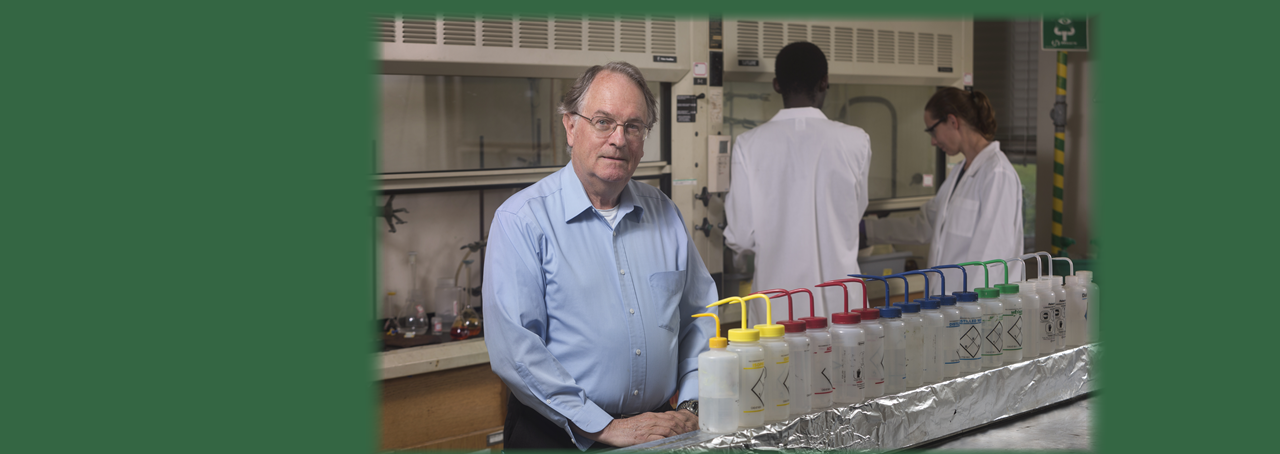Binghamton professor recognized for energy research
When you plug your laptop or phone into an outlet to charge, it may seem like a mundane activity, but that process is the result of years of research and experimentation, and represents a leap in the way energy is stored.
One of the pioneers in this work on the lithium-ion battery was M. Stanley Whittingham, currently a professor of chemistry and director of both the Institute for Materials Research and the Materials Science and Engineering program at Binghamton University. His breakthrough came while working with a team studying superconductors at ExxonMobil in the 1970s.
Whittingham was named a 2015 Thomson Reuters Citation Laureate in recognition of work that has made a significant impact on the scientific community. According to Thomson Reuters, this award indicates that he is a likely Nobel winner someday. He also is a partner in the Battery500 consortium, which will receive $10 million from the Department of Energy to develop more powerful lithium-metal batteries to drive the newest electric cars. In addition, he was recently appointed to the rank of distinguished professor – the highest system honors conferred upon SUNY faculty.
One of the many patents Whittingham holds is for the use of intercalation chemistry in high-power density, highly-reversible lithium batteries – the basis for subsequent discoveries that now power most laptop computers. It’s work for which he has achieved worldwide renown.
“All these batteries are called intercalation batteries,” Whittingham says. “It’s like putting jam in a sandwich. In the chemical terms, it means you have a crystal structure, and we can put lithium ions in, take them out and the structure’s exactly the same afterwards. We retain the crystal structure. That’s what makes these lithium batteries so good, allows them to cycle for so long.”
Whittingham completed his Chemistry BA (1964), MA (1967), and PhD (1968) at New College, Oxford. After completing his graduate studies, Whittingham served as a postdoctoral fellow at Stanford University until 1972. He worked for Exxon Research and Engineering Company from 1972 until 1984. After that, he spent four years working for Schlumberger before joining the Binghamton faculty.
Whittingham directs the NorthEast Center for Chemical Energy Storage (NECCES) at Binghamton, which was recently awarded a $12.8 million, four-year grant from the U.S. Department of Energy. One of 32 grants awarded for a total of $100 million to fund Energy Frontier Research Centers (EFRCs), it will help fund the scientific breakthroughs necessary for the transformation of the 21st Century energy economy.
"We hope to extract as much energy as possible while, at the same time, producing a battery that is smaller and cheaper to produce," Whittingham says. "This consortium includes some of the brightest minds in the field, and I look forward to working with them to create lithium batteries that will power future electric vehicles more affordably."
Whittingham and his students are trying to solve one of the more bewildering mysteries of batteries: Why do they store only about 25 percent of the energy that calculations show they are capable of reaching? Whittingham is confident that deeper research into the chemistry, physics and materials will produce the next big breakthrough.
comments powered by Disqus


